Introduction to top 15 fruits to grow in pots: Potted fruit trees are easy to grow and offer some distinct advantages. On a patio, deck, or courtyard, a small fruit tree in a pot can be moved to take advantage of different sun and shade patterns. It is possible to grow plants that would otherwise die in your garden soil by filling a large container with a specially formulated growing medium. Additionally, some borderline hardy species can be grown in pots in your area. Take note of this. Potted fruit trees typically produce fewer fruits than garden trees, although they may be ready earlier.
Guide on top 15 fruits to grow in pots, how to grow, how to start growing fruits in pots, top fruits to grow in pots, take care for fruits to grow in pots
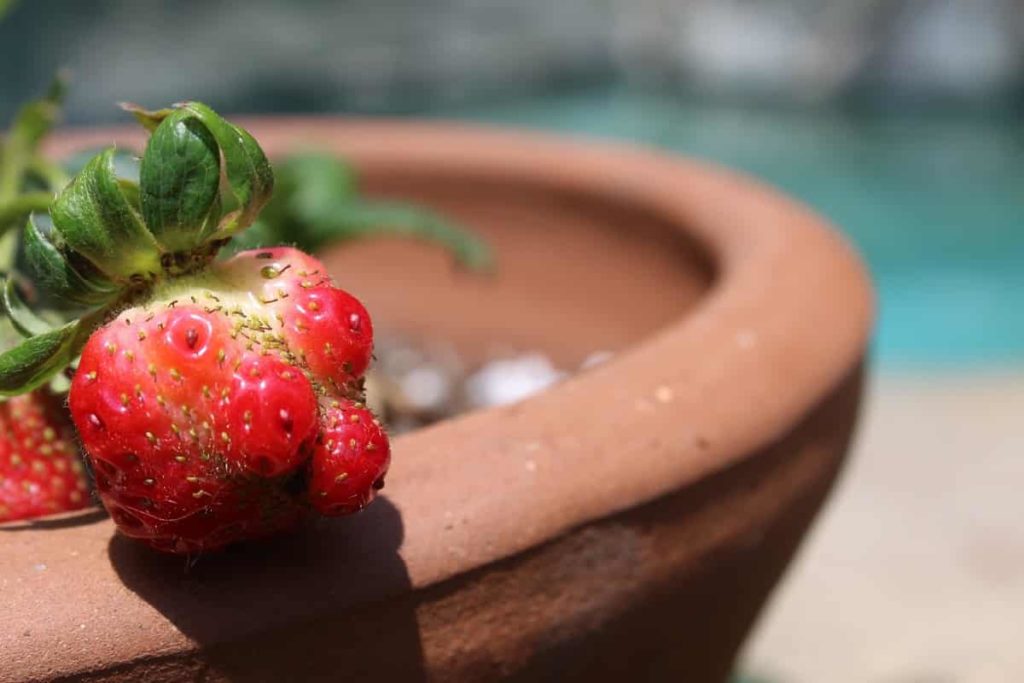
How to grow fruit in a pot
Today’s compact fruit cultivars and modern rootstocks enable smaller bushes and dwarf fruit trees to thrive in smaller gardens. The following rootstocks and varieties are recommended for growing in pots. Give them the best chance at success by planting them in a sunny spot – most fruits flourish in direct sunlight. Plants, fruit trees, and shrubs grown in pots will need more water and fertilizer than those planted in the ground. You’ll soon be able to harvest your crops if you keep your fruit in pots well-watered and fed.
How to start growing fruits in pots
Choose the type of fruit you want to grow
Strawberries are the most common fruits grown in pots on patios and decks. However, apple, orange, peach, and blueberry bushes can also be grown in pots. In addition to self-pollinating trees and bushes, there are also hybrids and cultivars pollen compatible. It is best to grow two of these trees or bushes for the best results. The greenhouse or nursery can help you choose suitable trees and bushes.
Select a suitable container
You can grow strawberries in many containers, including strawberry pots specially designed for them. You can also grow them in window boxes, long rectangular containers that sit on the ground, hanging baskets, vertical stacking containers, or even minor- or medium-sized containers that sit on a table.
In case if you miss this: Top 25 Vegetables To Grow In Aquaponics

Plant other fruits in large, deep containers
Blueberry bushes, raspberry bushes, and dwarf fruit trees require deep containers that sit on the ground. These fruit trees are often sold “bare root,” without soil or containers, or in containers of five to ten gallons. Bare-root trees and shrubs can be started in 5- to 10-gallon containers, but as they grow, both container-grown and bare-root plants need to be transplanted to larger 25- to 30-gallon pots. Most containers can be used as long as they have several drain holes.
For planting fruit plants, use potting soil
Instead of using garden soil for potting, fruit trees and bushes should be potted in soil-based potting soil. Plants grown in containers will likely not drain well enough from soil from the garden, which contains insects and diseases. In addition, plants, trees, and bushes should not be planted or transplanted any more profoundly than they previously developed.
Top fruits to grow in pots
Lemon
Lemon trees are well suited to container gardening. Plants of this tangy and sour fruit have also been successfully grown indoors in colder regions. Some varieties grow better in specific conditions than others, but most are suitable.
Strawberries
Strawberry plants grow well in pots. Perennials only need to be planted once, so they don’t require much work. In addition, the roots are protected from frost if you bring them inside during the colder months. You need to know that the best strawberry is the everbearing strawberry because you can harvest it twice a year at the beginning of June and the end of the summer. For container gardeners, this is better because you don’t get overrun all at once. For around 10 to 12 plants, you’ll need a pot 18 inches wide. Direct sunlight for eight hours a day will also be necessary.
Blueberries
Blueberries grow differently in pots than in the ground. Two plants are required to get a good crop. Then, from June through August, they will produce fruit. You will need a pot 22 inches in diameter and 18 inches deep to grow blueberries in a pot. In addition, you will need peat-based acidic soil. By using this concoction, you are well on your way to having enough blueberries for an incredible pie.
In case if you miss this: Top 15 Vegetables To Grow In Hydroponics
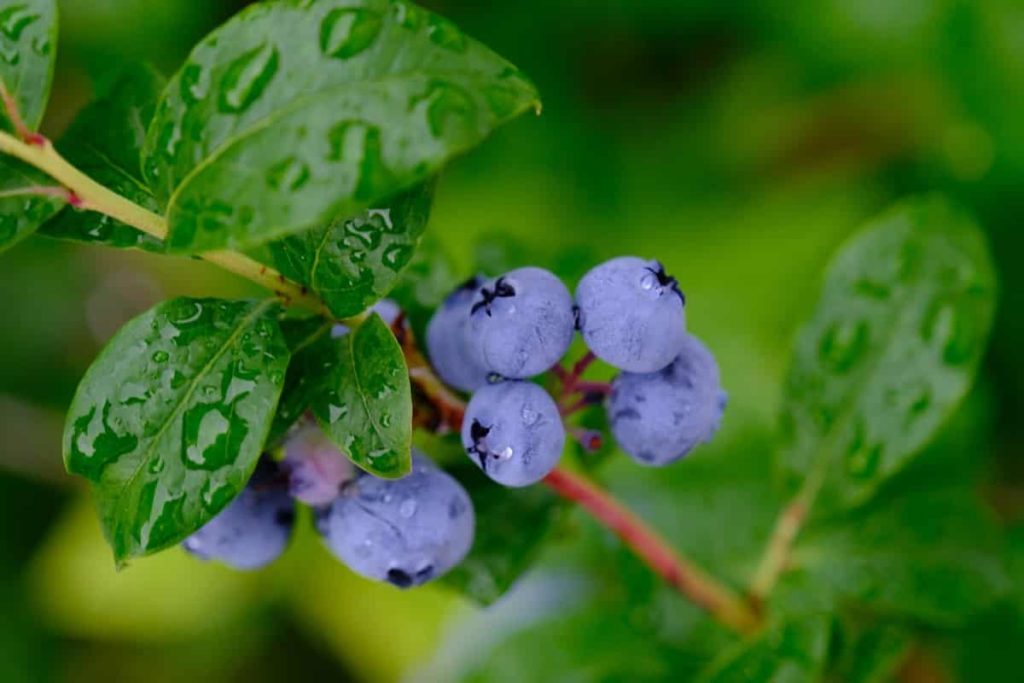
Pomegranate
A pomegranate plant is one of the juiciest fruits you can cultivate in a pot. How? Unlike other large fruit trees, this shrub has a shallow root system. So you shouldn’t have a problem growing pomegranates in containers if you’ve grown citrus in pots. Furthermore, pomegranates are more cold-hardy than lemon trees.
Figs
Growing figs in a pot may seem odd, but it is a great option. They can be grown in pots no larger than 16 inches. It also doesn’t matter what kind of soil they are in, as long as it’s well-drained. The plants require full sun despite being heat-tolerant, drought-tolerant, and non-finicky. You’ll also need to water them every day during the hottest summer months since water evaporates more rapidly with container gardening.
Cherry
Bush cherry cultivars are ideal for container gardening. As they dislike wet feet, cherries prefer mild climates and a little water. Drought and fluctuations in temperature could damage the plant, but it survives well in the cold. In addition, it prefers well-drained soil that contains plenty of organic matter.
Guava
Guava trees are a beautiful tropical appearance, with delicious fruits and sweetly scented flowers. They thrive in sunny and warm climates. The plant is native to warm regions but can adapt to temperate climates with mild winters.
In case if you miss this: Top 30 Vegetables To Grow In A Greenhouse
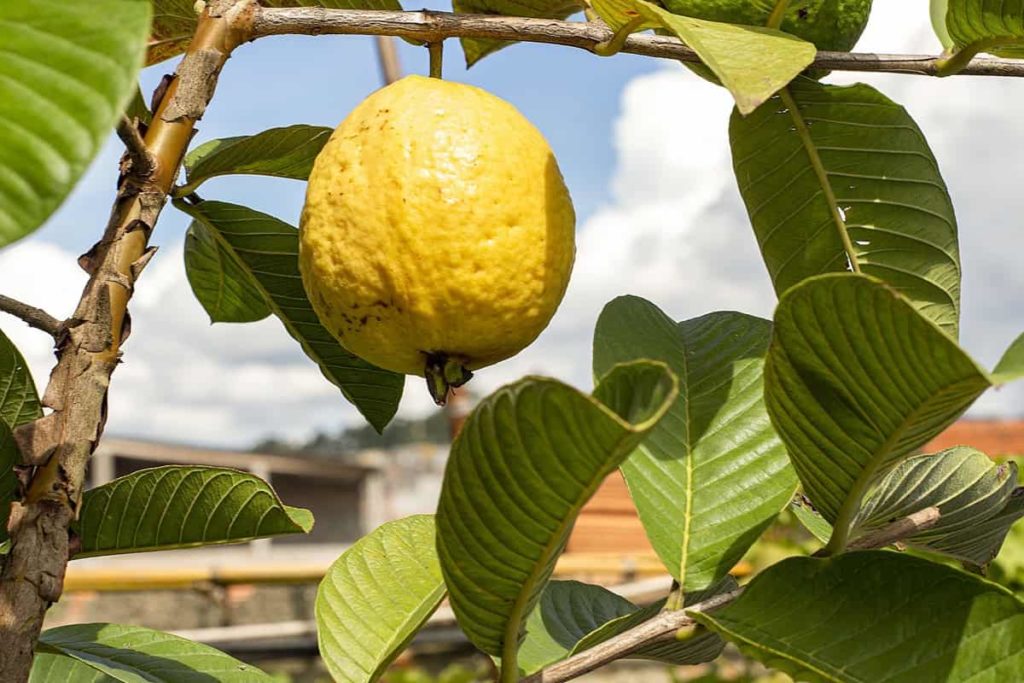
Cantaloupe
Growing fruit in containers is a good option. However, nothing beats the taste of fresh cantaloupes, which we grow in our garden every year. You will need an enormous container to grow cantaloupes. They are similar to plants you would grow in the garden. Just make sure you give the vines a place to grow and provide a trellis to support the fruit.
Watermelon
You can grow watermelons in pots with a good support system and well-drained potting soil. Watermelons grow like cucumbers.
Currants
You don’t have to put much effort into growing them in a container. A large pot, plenty of water, and compost mixed with the dirt are needed. You can grow currants as bushes or train them up a trellis.
Gooseberries
In a small space, you’ll get a lot of fruit from gooseberries. Although they can bear fruit in the shade, they grow best in a sunny, sheltered location. Keep a few gooseberries around the pot to ensure good airflow around the plants.
Peaches and nectarines
To bear fruit on peach and nectarine trees, please make sure you grow them in a sunny, sheltered place. Cover the trees with fleece once the flowers are visible to protect them. Repot the trees every two years.
Plums
To protect early flowers from frost, you can move plums in pots to the right spot, covering them with fleece if necessary. Compost needs grit for drainage, so add a lot of it to your pots. If you can only fit one plant, choose a self-fertile variety.
In case if you miss this: Top 50 Vegetables To Grow In The Backyard
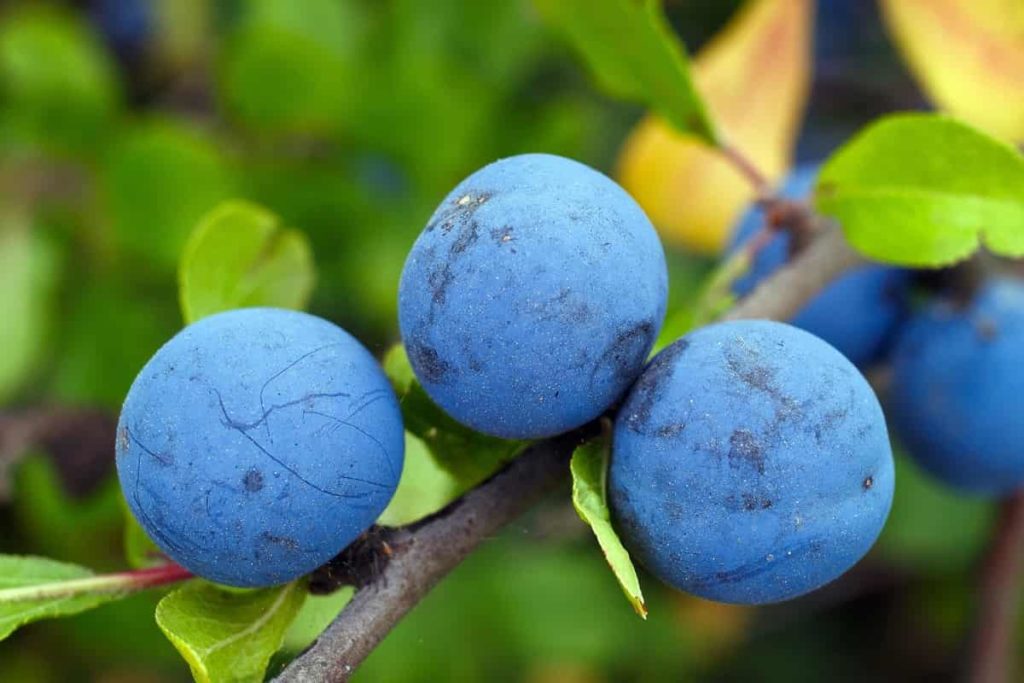
Pineapple
Typically, pineapples have long, elongated stems adorned with purple or red flowers. There are spines on the margins of pineapples, and they are flowering plants. The fruit is edible fresh or preserved. Cuttings are propagated easily under controlled conditions. Place the cuttings in bright, well-drained soil and place them in the sun. You can fertilize the plants after two months when the roots have established. If possible, move the plant outdoors during the spring or summer. A juicy pineapple contains anti-oxidants that can help prevent diseases and keep you healthy.
Papaya
Plants of the papaya family grow well in tropical and subtropical climates. This small tree has a stem of about 5-10 meters in length. The leaves have palmate lobes at the top. Sweet-smelling, night-blooming flowers pollinate it. The fruit is a large berry about 20-35 cm tall. In the hot-temperate zone, it is harvested when it turns yellow. Harvesting takes nine to eleven months using sharp gardening tools. Refrigerate the fruit for 2-3 days before eating and eat it when it has turned half yellow.
Raspberries
You can grow both summer and autumn-fruiting raspberries in pots, allowing you to enjoy the crop for several weeks. Choose varieties that bear summer fruit, bushier for those with limited space. You provide a sheltered, sunny location. The pot size for three summer-fruiting plants is 30cm.
In case if you miss this: How To Prepare Soil For Planting In Pots
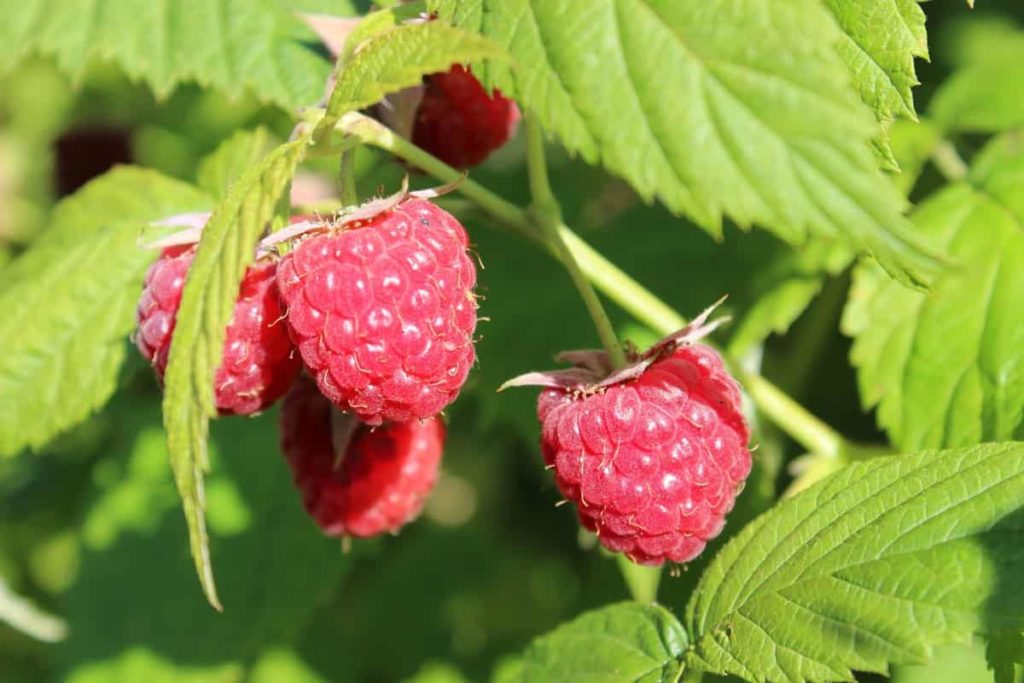
Take Care for fruits to grow in pots
- Direct sunlight is best for potted fruit trees. Therefore, provide the planted containers with at least six to eight hours of direct sunlight every day.
- During scorching weather, direct sunlight exposure is best avoided in the afternoon and morning because the hot, scalding afternoon sun can cause damage to the leaves and fruit of plants.
- Putting tree containers on wheeled carts is an excellent way to move them quickly.
- Water your fruit trees regularly. If you are growing fruit in a pot, you will need to water it frequently. It is because ground soil dries up much faster than soil in pots.
- Make sure the containers are checked every morning and every evening. When the top inch or two of the soil becomes dry, fruit trees, shrubs, and other plants require water. Drain the water out of the pot’s base.
- Watering plants with spoiled milk will keep off powdery mildew and enrich the soil with nutrients.
- Fertilizer needs to be applied every two weeks. It is also essential to fertilize potted fruit plants more frequently. Therefore, a balanced 10-10-10 water-soluble fertilizer is applied every two weeks.
- Follow the manufacturer’s instructions to determine how much fertilizer to dilute and when to apply. Constantly water the soil before applying fertilizer.
- Before mid-to-late summer, do not apply fertilizer to avoid new, tender growth in the winter.
- Drain the containers properly. The soil around fruit plants should be well-drained. Before planting, horticultural or washed playground sand is an excellent way to improve drainage in potting soil.
- Using bricks or feet on the planters can raise the plant off the ground. By doing so, ants are deterred from entering the planters.
- As soon as the fruit grows, make sure the plants don’t fall over. Fruit tree pots will not become top-heavy if a gravel layer is placed at the bottom. Especially when they are bearing fruit, taller fruit trees may also require stakes or trellises to keep upright.
- Over the winter, bring the containers inside. During the winter, even hardy fruit trees and bushes should be moved indoors or to a protected location in late fall when grown in pots.
- In areas where winter temperatures tend to get very cold, a basement or cool room in the house works well. The soil should be watered lightly when dry during the winter months.
Commonly asked questions about fruits to grow in pots
1. Is it possible to grow regular fruit trees in pots?
Today, many fruit trees thrive in containers due to smaller rootstocks that produce smaller bushes and trees. As a result, you can grow your own juicy, tasty fruit produce no matter your garden’s size, even if it’s just a patio or balcony.
2. Is it possible to keep fruit trees in pots for a long time?
There is usually an optimum container size for most container plants. However, it is essential to repot citrus trees annually to maintain both plant and soil health and vigor. Before putting the plants outdoors in the summer, report them in the spring.
3. What is the frequency of watering your fruit trees in pots?
Keep a close eye on the tree once planted in the container and only water the tree when necessary. Even though you want to avoid completely drying out the soil, you may not need to water it daily. Water the soil a couple of inches below the surface when the soil feels dry to the touch.
4. Is it possible to grow fruits in pots?
You can grow your tasty fruit even if you have a small garden or just a balcony or courtyard. Fruit can usually be grown in pots or other containers. However, many fruits grow better in pots than in gardens.
5. How can I feed fruit trees in pots?
The best compost for trees in pots is its loam content, which helps retain nutrients and water. Mix it with homemade compost, well-rotted manure, or garden soil. You can also add shredded cardboard and used teabags to improve water retention.
6. Do you know which fruits you can grow in small pots?
Plants and growing conditions can allow you to grow any fruit tree or soft fruit in containers, including berries. Peach, apple, and plum trees are a few examples of dwarf fruit trees. Blueberries, strawberries, and currants grow well as well.
- Asparagus Seed Germination and Variety Selection
- Seasonal Flower Gardening: Best Practices for Spring, Summer, Fall, and Winter
- How to Grow Hibiscus from Flower
- Plantation Ideas for Home Decoration: A Beginners Guide
- Flower Garden Designs and Layouts for Beginners
- Planting and Spacing Techniques in Papaya: A Beginner’s Guide
- Growing Gold: Essential Techniques for Planting Pineapples
- How to Make Kalanchoe Plant Bushy: Home Remedies and Solutions
- 11 Reasons Why Your Gardenia is Not Blooming: Home Remedies and Solutions
- Eco Elegance: The Guide to Designing a Drought-Tolerant Landscape
- Gardening on a Slope: Strategies for Hillside Landscaping
- Nourish and Flourish: Top Organic Mulches for Thriving House Plants
- Everything You Want to Know about Indian Mogra Flower: Discover Uses and Growing
- Green Thumb Success: Expert Tips for Cultivating Greenhouse Pumpkins All Year Round
- Maximize Growth & Flavor: The Ultimate Guide to Companion Planting in Herb Gardens
- How to Control Rhododendron Problems Naturally: Home Remedies and Organic Ways to Fix Them
- Natural Magic: The Remarkable Benefits of Cinnamon for Plants
- Best Steps to Revive Dying Tulip with Natural and Organic Treatment
- 10 Reasons Why Your Angel Trumpet is Not Blooming: Remedies and Treatment
- How to Fix Periwinkle Leaf and Flower-Related Problems: Natural Remedies and Solutions
- How to Fix Zinnias Leaf and Flower Problems: Discover Natural and Home Remedies
- Organic Steps to Induce Lemon Tree Flowers: A Comprehensive Guide
- Bloom Booster: Crafting the Perfect Homemade Bougainvillea Fertilizer
- Optimizing Growth: A Guide to Applying NPK Fertilizer for Potted Plants
- 10 Best Homemade Fertilizers for Rubber Plant: DIY Recipes and Application Method
- How to Boost Female Pumpkin Flowers: Effective Steps for More Flowers and High Yields
- Transform Your Indoor Garden: Top Benefits of Pink Salt for Houseplants
- 10 Best Homemade Fertilizers for Peacock Plants (Calathea): Easy DIY Guide
- Unlock Blooms: 9 Reasons Why Your Potted Chrysanthemum is Not Blooming
- 8 Reasons Why Your Potted Hibiscus is Not Blooming: Fix it with Simple Solutions
- Unlock Blooms: 9 Key Reasons Your Potted Frangipani Won’t Flower
- 10 Reasons Why Is My Ice Plant Not Blooming: Remedies and Treatment
- 10 Reasons Why My Potted Hydrangea Not Blooming: Treatment and Remedies
- 10 Reasons Why is My Wisteria Not Blooming: Remedies and Treatment
- 10 Reasons Why is My Goldfish Plant Not Blooming: Remedies and Treatment
- Maximize Your Space: Ultimate Guide to Balcony Gardening with Grow Bags